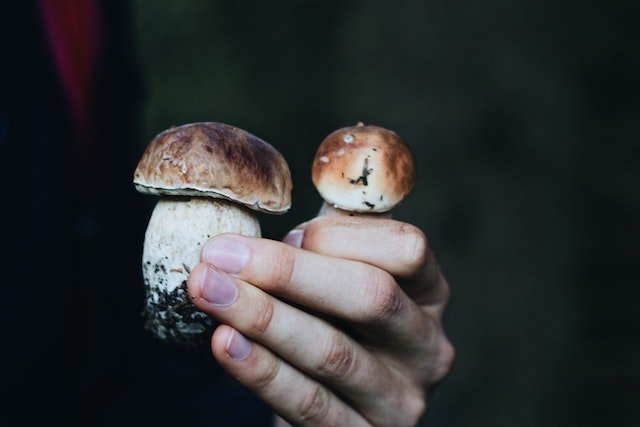
The poria mushroom is widely used in traditional Chinese medicine: appreciated above all as a diuretic and draining, its benefits also act on the immune system and metabolic syndrome.
Poria is a fungus that grows symbiotically on the roots of some conifers and has long been used in traditional Chinese medicine.
The poria fungus is mainly used as a diuretic and drainage but its benefits also affect the immune system and metabolic syndrome. Let’s get to know better the characteristics, properties and benefits of the poria mushroom.
Poria, description and use
Poria is an underground saprophytic fungus: it therefore grows underground in symbiosis with some species of conifers including pine and is widespread above all in China, Japan, Korea and North America.
The scientific name of Poria is Wolfiporia extensa and belongs to the Polyporaceae family. Poria is also known as Poria cocos due to the similarity between this mushroom and coconut or also as China root or Indian bread.
The poria mushroom can reach a weight of about one kilogram, has an appearance reminiscent of that of the truffle – brown on the outside and whitish on the inside – it has a soft and elastic consistency and is characterized by a sweet taste.
Poria mainly contains high molecular weight polysaccharides, in particular the β (1,3-1,6) -D-glucans responsible for the properties of this fungus.
Poria: properties and benefits
The poria fungus is a remedy of traditional Chinese medicine that has been using it for over two thousand years to eliminate water retention and excess mucus and in general as a drainage and diuretic.
The biologically active components present in the poria fungus are represented by polysaccharides, triterpenes, fatty acids, sterols and enzymes that are found in dried and pulverized sclerotia.
The main activities recognized to this mushroom are the anticancer, immunomodulatory, anti-inflammatory, antioxidant and anti-aging activities.
Furthermore, the diuretic action of the poria fungus exploited by traditional Chinese medicine has been demonstrated in in vivo studies, in which an increase in urinary excretion has been highlighted, with a consequent improvement in cardiac function.
The polysaccharides present in the poria mushroom seem to have an immunomodulating effect since their intake would increase the levels of nitric oxide, some interleukins, TNF and interferon γ.
In addition to the activity on the immune system, the polysaccharides present in the poria appear to improve hyperglycemia, i.e. the increase in blood glucose, hyperlipidemia (increase in triglycerides and cholesterol in the blood) and hepatic steatosis, also known as fatty liver.
Poria: nutritional values
The poria mushroom provides 180 kcal per 100 grams and contains mainly carbohydrates and fiber (about 25 grams) followed by proteins (about 18 grams).
The fats present in the poria, on the other hand, correspond only to 2 grams per 100 grams of product.
Poria: how to take it and contraindications
The poria mushroom is sold in herbal medicine and pharmacy in the form of powder, tablets or capsules. Generally, one teaspoon of powder is taken per day, or two tablets or capsules per day.
Poria is considered a safe natural remedy and there are no known contraindications or side effects related to taking supplements that contain this fungus.






